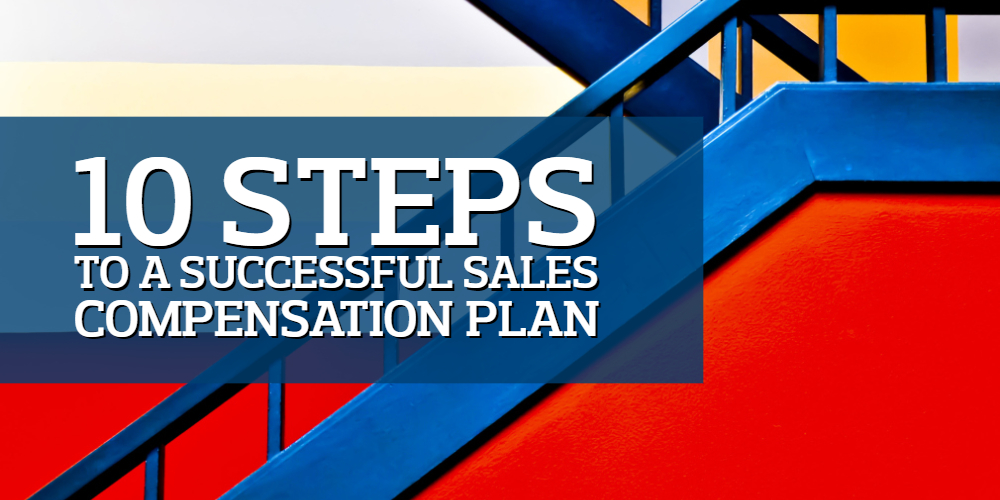Ensuring your sales compensation plan is effective means evaluating your entire sales force— from job roles territory allocation. Cover your bases by following our 10-step process.

Across many industries, sales compensation costs are consistently rising, while quota achievement levels continue to drop. You probably ask yourself these types of questions on a frequent basis: Do I have the right sales team in place to achieve my goals? And do I have the right measurements in place to know if my sales plan is even working? Following these 10 steps will maximize the performance of your sales force.
Step 1: Annual Assessment Plan
As you head into the fall planning season, are you following an established quantitative and qualitative assessment process to evaluate the effectiveness of your sales compensation plan? A good assessment approach should include sales leadership, sales operations, finance, HR, and compensation departments. It’s time to get the whole team together and prevent working in silos.
Step 2: Selling Behavior
Are your people selling the right products to the right customers at the right time? Companies are constantly setting higher corporate sales growth objectives, and this can put a huge strain on the effectiveness of the sales compensation plan. It becomes critical to ensure that the behavior of your sales people is aligned with your overall corporate objectives.
Step 3: Calculating the ROI
Looking at Compensation Cost of Sales is a powerful way to understand your sales plan ROI—but there’s more to the story that needs to be understood. From market pay levels to employee turnover to market share growth, it’s time to expand your quantitative view to fully understand the plan’s ROI.
Step 4: Market Competitiveness
How do your employees view the sales plan? Is it competitive with your peers? Retaining high-performing sales talent is notoriously hard. If your plan is not competitive enough to attract new hires and engage current employees (combined, of course, with a comprehensive talent and engagement strategy), then you might as well be working with one hand tied behind your back.
Step 5: Differentiate Pay
Does your plan appropriately reward top-performing sales people? Or are your top performers leaving and taking customers with them? Conversely, are you over-rewarding bottom performers or does your plan naturally push them out? Keep in mind some level of voluntary attrition is healthy. Evaluating turnover and engagement scores by levels of performance will give you the first clue as to whether you’re doing all you can to align pay with performance.
Step 6: Sufficient Opportunity in Territory
Is your sales plan tied to the real opportunity within each territory? Whether territories are account based or geographically based, there needs to be a true measure of opportunity to drive the right behavior.
Step 7: Goal Achievement
Quota achievement levels should be dispersed. On one hand, too high of achievement levels across the board indicates a lack of rigorous goals while too few sales people reaching quota would indicate the opposite. Goals need to be challenging yet feasible— so find that sweet spot and revisit it often as it will change with the business environment.
Step 8: Evolving Job Roles
Has the required selling skillset evolved at your organization over the years? Chances are it has as your business goals change. Perhaps you needed a hunter in the past, but now that the book of business has been built up and additional products or services are being offered, there is a requirement for a hunter/farmer blend. Not only will this evolution require changes to the skills of your organization, they may also prompt changes to the sales plan.
Step 9: Determining the Right Metrics
Are your sales people being paid for the right measurements? Do the mechanics of the plan align with overall business objectives? If you’re not using the right metrics—or too many metrics that make the plan confusing—you could be confusing your employees and failing to drive the right behavior.
Step 10: Understood by Employees
Make sure your sales force understands all the components of how they are evaluated and paid. Plans that look good on paper might not get the right results if they are overly complex or difficult to understand. Constant communication and transparency are critical to making sure managers and their teams are on the same page.
Interested in Learning More?
Our Sales Force Effectiveness practice helps companies of all sizes ignite their organic sales growth through data and advisory services in Sales Organization Strategy, Sales Compensation Strategy, Sales Talent Strategy and Customer Targeting.
If you want to talk to one of our consultants, please write to consulting@radford.com.
Related Articles